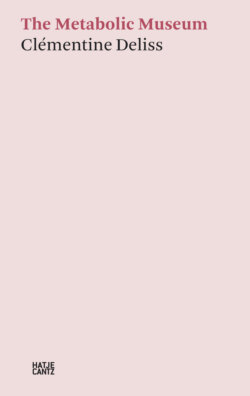Читать книгу Clémentine Deliss - Clémentine Deliss - Страница 6
На сайте Литреса книга снята с продажи.
Prologue
ОглавлениеA few years back, some close friends encouraged me to apply for the directorship of an ethnographic museum in Germany. At first, I was cautious. I had been working independently as a curator and publisher for more than twenty years, traveling from city to city to set up new projects with artists, and I was keen to retain my autonomy. At the same time, I needed to settle down and transfer my experience onto an environment I could qualify with my own model. I was selected for the job and moved to Frankfurt, where I lived for five years. This is the narrative of my endeavor to transform the modus operandi of a contentious genre of European museum and develop a post-ethnographic institution.
Sometimes renamed museum of world cultures, the ethnographic museum is the most extreme rendition of a cultural institution that retains “colonial presence” even today.1 While I focus on the crisis of this particular museum, I hope to address other types of venue that hold collections and recognize the necessity to rethink their constitution in the twenty-first century. If museums have to be pioneering and fight against routine, habit, and conservatism, what model of critical and reflexive methodology can be deployed on existing, forgotten, soiled, or non-restituted collections?
The subjective, dialogical activity undertaken in collaboration with artists, designers, writers, anthropologists, and lawyers at the Weltkulturen Museum between 2010 and 2015 consolidated the modus operandi of my earlier transdisciplinary curatorial practice. In Frankfurt, I sought to generate movement within the museum’s institutional structure, affecting how we worked and where the priorities lay for a museum, both internally and toward the public. Located in three nineteenth-century villas, our domestic research centered on the tens of thousands of artifacts and the vast photographic archives housed within the museum.
This book was written in great part while I was a fellow of the Wissenschaftskolleg zu Berlin, the Institute of Advanced Study in Berlin. Practically airlifted out of Frankfurt, I was given a room of my own, safeguarded from inquisitive journalists, and encouraged to write up this experience as if it had been my own fieldwork in the museum. With the help of my notebooks, I was able to reconstruct the logic of each resolution that I took on a day-to-day basis until that day in April 2015 when the city of Frankfurt unfairly dismissed me.
I am grateful to the many friends, colleagues, and allies who supported me both during and after my time at the museum. In particular, I would like to thank Michael Oppitz most warmly for having faith in my approach and for accompanying me when my professional world fell apart; Paul Rabinow for his friendship since the mid-eighties when we were both in Paris, his guidance from afar, and his incisive and inspiring work around the concept of remediation. From the perspective of art practice, I thank all the artists and writers who trusted me as a curator, keen as I was to divert them from any banal orthodoxy of institutional practice by drawing them into unforeseeable situations and encouraging conceptual work with these sensitive and vital collections. In particular, I would like to highlight the stimulating and inspired collaborations that took place in the museum with Buki Akib, A Kind of Guise, Marie Angeletti, Farzanah Badsha, Benedikte Bjerre, Rut Blees Luxemburg, Peggy Buth, CassettePlaya, Marc Camille Chaimowicz, Sunah Choi, Hamish Clayton, Clegg & Guttmann, Minerva Cuevas, Mathis Esterhazy, Patricia Falguières, Heather Galbraith, Bryce Galloway, Gabriel Gbadamosi, Matthias Görlich, Werner Herzog, Pramod Kumar KG, David Lau, Armin Linke, Antje Majewski, Tom McCarthy, Tina Makereti, Markus Miessen, Shane Munro, Gabi Ngcobo, Otobong Nkanga, Peter Osborne, PAM (Perks and Mini), Francis Pesamino, Simon Popper, Ciraj Rassool, Olivier Richon, El Hadji Sy, Syafiatudina, Luke Willis Thompson, David Weber-Krebs, and the many art students of the Städelschule who exhibited in the Weltkulturen Labor’s Green Room.
Lothar Baumgarten, James Clifford, Hans-Jürgen Heinrichs, Peter Pakesch, Dan Peterman, Issa Samb, Teimaz Shahverdi, Sebastian Schellhaas, and Richard Sennett were trusted interlocutors who accompanied me while I tried to fine-tune new relations between museum collections and contemporary meanings. Finally, I would like to show my respect to the many friends in Frankfurt who helped me through various phases of this journey, in particular Ann Anders, Rüdiger Carl, Konstanze Crüwell, Jutta Ebeling, Uwe Fischer, Susanne Gaensheimer, Bärbel Grässlin, Tamara Grčić, Raphael Gross, Wolfgang Günzel, Nikolaus Hirsch, Phyllis Kiehl, David Hofferbert, Michael Hofferbert, Stefan Mumme, Yvette Mutumba, Alexandra Papadopoulou and very Frankfurt, Philippe Pirotte, Tobias Rehberger, and Bernd Vossmerbäumer.
